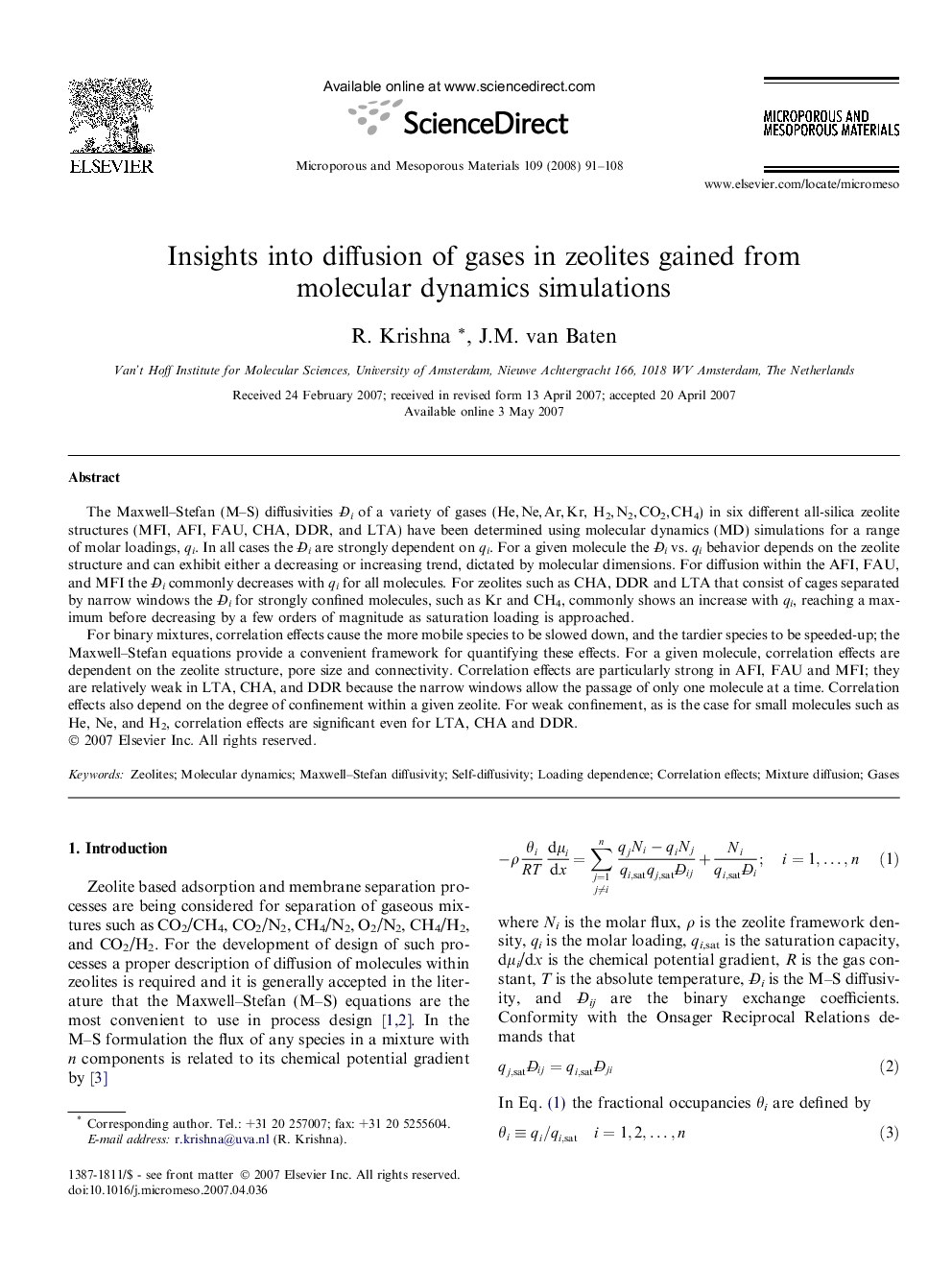| Article ID | Journal | Published Year | Pages | File Type |
|---|---|---|---|---|
| 76416 | Microporous and Mesoporous Materials | 2008 | 18 Pages |
The Maxwell–Stefan (M–S) diffusivities Đi of a variety of gases (He, Ne, Ar, Kr, H2, N2, CO2, CH4) in six different all-silica zeolite structures (MFI, AFI, FAU, CHA, DDR, and LTA) have been determined using molecular dynamics (MD) simulations for a range of molar loadings, qi. In all cases the Đi are strongly dependent on qi. For a given molecule the Đi vs. qi behavior depends on the zeolite structure and can exhibit either a decreasing or increasing trend, dictated by molecular dimensions. For diffusion within the AFI, FAU, and MFI the Đi commonly decreases with qi for all molecules. For zeolites such as CHA, DDR and LTA that consist of cages separated by narrow windows the Đi for strongly confined molecules, such as Kr and CH4, commonly shows an increase with qi, reaching a maximum before decreasing by a few orders of magnitude as saturation loading is approached.For binary mixtures, correlation effects cause the more mobile species to be slowed down, and the tardier species to be speeded-up; the Maxwell–Stefan equations provide a convenient framework for quantifying these effects. For a given molecule, correlation effects are dependent on the zeolite structure, pore size and connectivity. Correlation effects are particularly strong in AFI, FAU and MFI; they are relatively weak in LTA, CHA, and DDR because the narrow windows allow the passage of only one molecule at a time. Correlation effects also depend on the degree of confinement within a given zeolite. For weak confinement, as is the case for small molecules such as He, Ne, and H2, correlation effects are significant even for LTA, CHA and DDR.
